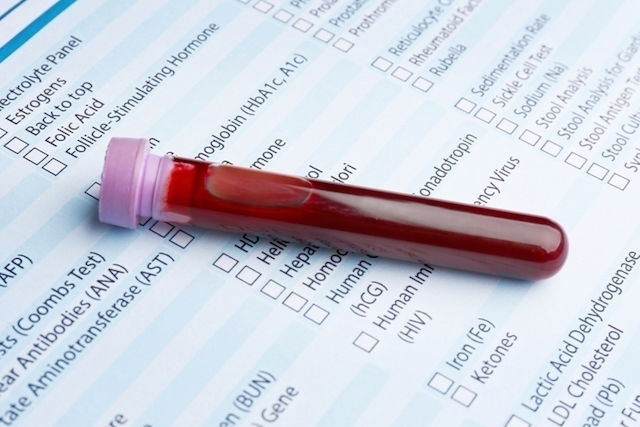The RDW (red blood cell distribution width) blood test looks at variations in size between red blood cells. Red blood cells that are different in size is referred to anisocystosis.
When the blood test reveals an abnormal result, it means that red blood cells are above or below the average or expected size. Values that are too low are usually not of clinical significance, especially if all other red blood cell markers, like MCV, are within normal limits.
RDW is a test that is part of a CBC or complete blood count test. It is evaluated alongside other red blood cell markers to assess overall blood cell functioning and production. When RDW is noted to be abnormal, it may prompt the doctor to suspect other health conditions, like anemia, diabetes or liver issues, prompting further assessment and/or testing.

When is RDW ordered?
Many times, this test is ordered to assess for anemia, especially in patients who present with symptoms like dizziness, fatigue or pale skin. The doctor may also order this test in patients who:
- Have a family history of a blood disorder
- Hemorrhaged during surgery or following direct trauma
- Have been diagnosed with an illness that can cause blood cell abnormalities
- Have a chronic disease, like HIV
Sometimes, this test is also ordered as part of a routine work-up, and not for any specific conditions.
How to prepare for this test
To prepare for a CBC blood test, you do not need to fast. However, CBC may be ordered with other blood tests that require a minimum of 8 hours of fasting.
Collecting blood usually takes less than 5 minutes. Samples are collected by puncturing the vein with a sterile needle and the blood is removed through a tube and into a vial.
What RDW results mean
The normal reference value for RD2 is between 11 and 14%, however this reference range can vary from lab to lab. There are many reasons why values can be above or below this range, which is why blood tests should be interpreted by the ordering doctor.
High RDW levels
A high RDW, which is also known as anisocytosis, means that there is a significant variation between the size of your red blood cells. RDW can become elevated with conditions like:
- Iron-deficient anemia
- Megaloblastic anemia
- Thalassemia
- Liver disease
People who are undergoing chemotherapy or who are taking antivirals may also present with increased RDW levels.
Low RDW levels
A low RDW is usually not of clinical significance on its own. A low result should generally be compared with other CBC results. It may be noted in people with a history of liver disease, kidney disease, HIV, cancer or diabetes.
